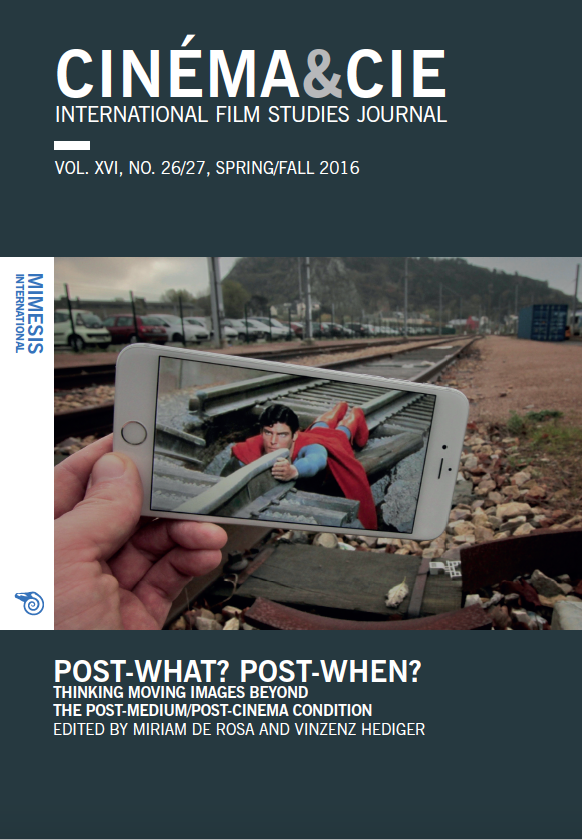Becoming Space in Every Direction: Birdman as Post-cinematic Baroque
Abstract
While the post-cinematic is typically understood as the passing of film-as-celluloid, the digital expressivity of film need not involve the loss of materiality. Inspired by Giuliana Bruno’s call for cinematic materiality to be re-thought through the substance of material relations rather than through technological definitions, this article examines how the baroque endures in the post-cinematic. Concentrating my analysis on Birdman: Or, The Unexpected Virtue of Ignorance (Alejandro González Iñárritu, 2014) as one instance of the post-cinematic baroque, it argues for the baroque as being organised by particular vectors of movement that move between the horizontal and the vertical and the inner and the outer, often giving rise to composite and/or highly spatialized displays. Taking inspiration from Gilles Deleuze’s philosophy of the fold, art history, media archaeology and film studies, I argue for Iñárritu’s film as enacting baroque configurations of body, space, movement and environment. As with the formal and affective uplift of the musical and superhero film genres as well as the importance of movement in historic baroque forms, Birdman defies the horizontal plane. As I argue it, Birdman reprises the longstanding baroque desire to become space in every direction.






